Towards tailored safety testing methods for nanomaterials









The OECD, which traces its roots to the Marshall Plan, groups 38 member countries committed to democratic government and the market economy. It provides a forum where governments can compare and exchange policy experiences, identify good practices and adopt decisions and recommendations. Dialogue, consensus, and peer review and pressure are at the very heart of the OECD.
The OECD is working for a stronger, cleaner and fairer world economy. The principal aim of the Organisation is to promote policies for sustainable economic growth and employment, a rising standard of living, and trade liberalisation. By “sustainable economic growth” the OECD means growth that balances economic, social and environmental considerations.
The OECD is one of the world’s largest and most reliable sources of comparable statistical, economic and social data. It monitors trends, collects data, analyses and forecasts economic development, and investigates evolving patterns in a broad range of public policy areas such as agriculture, development co-operation, education, employment, taxation and trade, science, technology, industry and innovation in addition to environment. The OECD family of organisations also includes the International Energy Agency (IEA), the Nuclear Energy Agency (NEA), and the International Transport Forum (ITF).

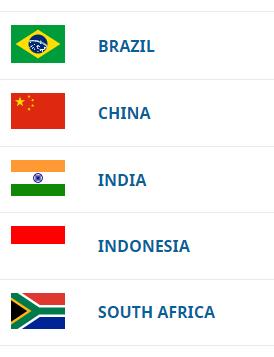

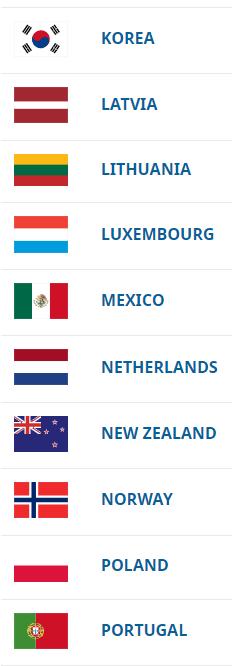

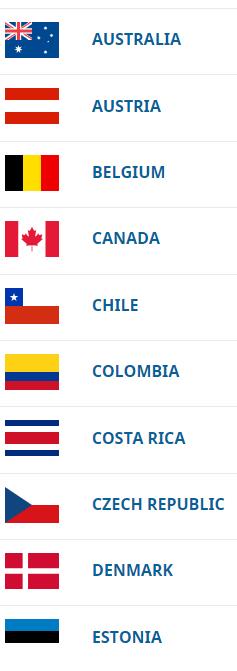
Since 1981, the OECD has been developing Guidelines for the Testing of Chemicals for determining their physical and chemical properties (e.g. water solubility), effects on human health and wildlife (e.g. short and long-term toxicity), environmental fate and behaviour, biocide efficacy and pesticide residue chemistry. Test Guidelines are prepared with input from experts working in governments, academia, industry and other non-governmental organisations such as environmental protection groups and the animal welfare community.
The OECD Test Guidelines are recognised internationally as the standards for non-clinical environment and health safety testing of chemicals and chemical products. They are an integral part of the Council Decision on the Mutual Acceptance of Data and are used to support chemical safety regulations in many countries. Each Test Guideline provides sufficient detail for chemicals to be tested in the same manner in laboratories around the world.
These Guidelines are continuously expanded and updated to ensure they reflect the state-of-the-art science and techniques to meet member countries regulatory needs.

Traditional chemicals (bulk form) have physical properties that are constant regardless on their size. This is not the case for nanomaterials, since the size will determine their physical and chemical properties. This means that a nanomaterial behaviour will depend not only on the substance but also on the size withing that substance. Furthermore, newer, and more complex materials (advanced materials) are being developed which possess/ display additional complexities (enhance functionalities and/ or multicomponent).
The OECD Programme on Manufactured Nanomaterials develops the tools for the implementation of safety policies for emerging materials and enhance regulatory preparedness. In collaboration with the OECD Test Guidelines Programme, the OECD develops standardised methods that generate relevant and reliable data, which is instrumental for regulatory implementationa and for enhancing innovation.
To intensify this endeavor and support the OECD, a three-year project called NANOMET, funded by the European Union has been launched in May 2020.
Did you know?
More than 150 harmonised test methods have been developed for determining physical and chemical properties of chemicals, their effects on human health and wildlife, environmental fate and behaviour, and pesticide residue chemistry.
Key link: oe.cd/test-guidelines
The 1981 OECD Council Decision on the Mutual Acceptance of Data (MAD) is the cornerstone for the system of standards represented by the OECD Test Guidelines and Good Laboratory Practice Principles. This Council Decision requires OECD member and adhering countries to accept test data developed for regulatory purposes in another member of adhering country if these data were developed in accordance with the Test Guidelines and GLP Principles. The 1989 Council Decision on Compliance with GLP ensures that compliance with the latter is monitored by countries in a harmonised and internationally acceptable manner.
Together, these Council Decisions mean that new non-clinical environment, health and safety data for notification or registration of a chemical have to be developed only once by industry and can then be used for regulatory purposes across OECD countries and non-OECD countries which adhere to the system.
Did you know?
The Council Decision on MAD “decides that the data generated in the testing of chemicals in an OECD member or adherent country in accordance with OECD Test Guidelines and OECD Principles of Good Laboratory Practice shall be accepted in other member or adherent countries for purposes of assessment and other uses relating to the protection of man and the environment.”
MAD increases the efficiency and effectiveness of chemical notification and registration procedures for both governments and industry. It ensures high-quality test data and a common basis of information for assessing risks to human health and the environment, thereby facilitating government evaluations and work sharing. MAD also helps limit the number of animals used in testing and their suffering, and saves time and money for industry by avoiding duplicative testing.
Key publication:
The Saving Costs in Chemicals

Management - How the OECD Ensures benefits to Society report examines the net benefits that accrue to governments and industry from the work of the OECD Environmental, Health and Safety (EHS) Programme, estimates that the programme saves governments and industry approximately EUR 309 million a year. It also describes the programme’s equally important nonquantifiable benefits.
Key link: https://oe.cd/chemicals-costs
Which countries participate in the MAD system?
Member countries
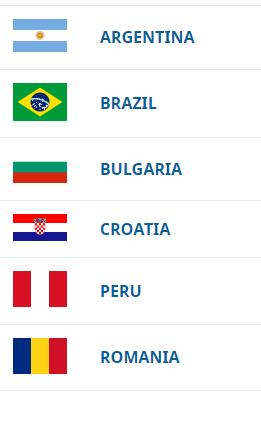




Non-Member provisional and full adherents
TOWARDS TAILORED SAFETY TESTING METHODS FOR NANOMATERIALS
INDIA
MALAYSIA
SINGAPORE
SOUTH AFRICA
THAILAND
Watch our video on Saving costs in Chemicals Management with the Mutual Acceptance of Data system:

National Coordinators of the OECD’s TGs programme are responsible for taking decisions on TGs (approve and update of TGs) and decide on project proposals to include in the work plan. The National Coordinators represent regulatory authorities in OECD Member countries and countries adhering to MAD. They maintain a vast network of national experts and scientists from research and regulatory areas to work together on developing Test Guidelines, Guidance Documents and other supporting materials to ensure sound science and international regulatory acceptance of test methods.
https://oe.cd/national-coordinators-tgs
Did you know?
Test Guideline Publication
National Coordinator(s)
Project proposal
Working Party NCs of the TGP (WNT)
Working Party NCs of the TGP (WNT)
Lead country(ies) and Expert Group
Decision
Project proposal accepted
Project proposal rejected
Project proposal needs further information (?)
Submission for approval
Draft Test Guideline
WNT review/comments via written procedure
Supporting documentation
Consolidation of draft TG within the Expert Group
Evaluate validation , status of the method, any additional info/data needed: Transferability and reproducibility?
The OECD TG Programme also benefits from the expertise provided from observers from the Business and Industry Advisory Committee (BIAC), Environmental non-governmental organisations , and the International Council on Animal Protection (ICAPO). This ensure that the final outputs are relevant and useful for all stakeholders and follow the 3Rs principles.
• Policy discussions on innovative materials
• Assist in implementation of safety policies and regulatory preparedness
Expert feedback on developments TG/GDs for nanomaterials under way
The Working Party of the National Coordinators of the Test Guidelines Programme (WNT)
• A well established international programme for regulatory standard-setting.
• Oversees the development of Test Guidelines (TGs) and associated Guidance Documents (GDs).
Recommended TG/GD needs for NMs and AdMa
• Development
Expert feedback on the development of TG/GDs for NMs (and AdMas) under way
• Optimisation
• Validation
• Validation
peer-reviewed
• TG Development
• TG Approval
• OECD Member Countries
• MAD Adherents
Develops a strategy for incorporating NMs and AdMas in the Test Guidelines Programme
Note:
NMs: Nanomaterials
AdMa: Advanced Materials
TEST GUIDELINE (TG) REGULATORY ACCEPTANCE
10 . TOWARDS TAILORED SAFETY TESTING METHODS FOR NANOMATERIALS
From science to standards - Developing standardised methods to generate trustable safety data for nanomaterials
The OECD Guidelines for the Testing of Chemicals are split into five sections:
Key link: https://oe.cd/testing-chemicals
TAILORED SAFETY TESTING METHODS FOR NANOMATERIALS




Sections where new or updated TGs have already been published for nanomaterials safety testing, as well as supporting documents:

l Physical-chemical properties (3 TGs, 1 report)
l Effects on biotic systems (1 GD)
l Environmental fate and behaviour (1 TG, 5 reports or GDs)
l Human health effects (2 updated TGs, 2 study reports)
The Malta Initiative (MI) arose during the Maltese EU Council Presidency in 2017, when Germany initially approached the EU Directorate-General for Research and Innovation (DG RTD) to request political and financial support to develop and amend TGs and GDs. The aim of this initiative was to ensure that any nanospecific issues for fulfilling regulatory requirements are addressed. The Malta Initiative is a a voluntary network without an official mandate that currently brings together a group of EU member states, the European Commission (notably the DG RTD, DG ENV, DG GROW and Joint Research Centre (JRC), the European Chemicals Agency (ECHA), industry and other institutions committed to this aim and welcomes additional international collaborators. In line also with existing procedures at the OECD, the Malta Initiative welcomes any country or organisation with expertise to become an active contributor, when they are interested in working on adapting existing OECD TGs or developing new OECD TGs and/or GDs. The activities of the Malta Initiative are supported through national, international and EU resources by means of direct funding, in-kind contributions, or providing expertise.
Appropriate, clear and enforceable legislation is a key factor for long-term investments and innovation. Legislation has to keep pace with innovative research developments for citizens to place trust in innovation. This also includes having appropriate, recognised methods in place for determining legally required data.”
https://malta-initiative.org/about/
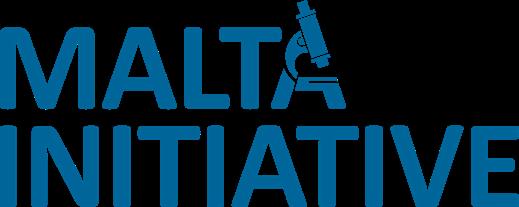
The Malta Initiative triggered EU funds to support a number of European Projects that advanced the scientific knowledge to assess the safety of manufactured nanomaterials. This resulted in 13 OECD’s projects (Test Guidelines, Guidance Document and Study Reports) that increase the number of tools available to assess the safety of manufactured nanomaterials.
To Support safe and sustainable innovation - Help overcome trade barriers - Make legislation enforceable
Link: https://malta-initiative.org/MaltaInitiative_UPLOADS/Malta%20Initiative%20Position%20Paper_Stand%2007.08.2023.pdf

2
OVERVIEW OF NANOMET-SUPPORTED PROJECTS
Section 1: Physical-Chemical properties
l Test Guideline No. 124: Determination of the (Volume) Specific Surface Area of Manufactured Nanomaterials (June 2022)
l Test Guideline 125: Particle Size and Size Distribution of Manufactured Nanomaterial (June 2022, corrected in 2023)
l Test Guideline 126: Determination of surface hydrophobicity of manufactured nanomaterials (July 2023)
l Determination of solubility and dissolution rate of nanomaterials in water and relevant synthetic biologically mediums (Forthcoming)
l Identification and quantification of the surface chemistry and coatings on nano- and microscale materials (Forthcoming)
l Determination of dustiness of manufactured nanomaterials (Forthcoming)
l Determination of concentrations of nanomaterials in biological samples for (eco)toxicity studies (Forthcoming)
Section 2: Effects on Biotic Systems
l Aquatic and Sediment Toxicological Testing of Nanomaterials (August 2021, updated in March 2022)
Section 3: Environmental fate and behaviour
l Testing of dissolution and dispersion stability of nanomaterials and use of data for further environmental testing and assessment strategies (August 2021, updated in March 2022)
l Leaching in soil columns (July 2021)
l Removal of nanomaterials in Wastewater Treatment Plants (July 2021)
l Aquatic (Environmental) transformation of nanomaterials (Draft)
Section 4: Human Health
l Applicability of TG 487 in vitro micronucleus test (genotoxicity) for testing manufactured nanomaterials (September 2022)
l Applicability of TG 442D in vitro skin sensitization to manufactured nanomaterials (July 2023)
Test Guidelines and Guidance Documents covered by NANOMET 2
Physical-chemical properties
Effects on Biotic Systems
Environmental Fate and Behaviour



OECD (2023), Test No. 125: Nanomaterial Particle Size and Size Distribution of Nanomaterials
This Test Guideline, covering nanomaterials spanning from 1 nm to 1000 nm, is intended for particle size and particle size distribution measurements of nanomaterials. The TG includes the following methods: Atomic Force Microscopy (AFM), Centrifugal Liquid Sedimentation (CLS)/Analytical Ultracentrifugation (AUC), Dynamic Light Scattering (DLS), Differential Mobility Analysis System (DMAS), (Nano)Particle Tracking Analysis (PTA/NTA), Small Angle X-Ray Scattering (SAXS), Scanning Electron Microscopy (SEM), and Transmission Electron Microscopy (TEM). For measuring the diameter and length of fibres, analysing images captured with electron microscopy is currently the only method available.
https://doi.org/10.1787/af5f9bda-en.
Hydrophobicity can provide information on the interaction of NMs (e.g.: with aquatic and terrestrial organisms (incl. bioaccumulation and persistence), and with human cell surfaces (incl. transport into the human body through skin and lungs, and consequent accumulation in tissues/organs or clearance from blood circulation). Asa response, this TG offers a method to determine the hydrophobicity index (Hy) of the NMs as dispersed in an aqueous sample (taking into account all treatments that would influence their properties, including coatings) or after dispersion of the powder following a recommended protocol.
https://doi.org/10.1787/ae9c0fd1-en.
OECD (2022), Test No. 124: Determination of the Volume Specific Surface Area of Manufactured Nanomaterials
This Test Guideline (TG) describes a harmonised procedure to determine the Volume Specific Surface Area (VSSA) of powdered solid manufactured nanomaterials (MNs). The VSSA (in m2/cm3) of a material is calculated by multiplying its mass specific surface area (in m2/g) with its skeletal density (in g/cm3). The determination of the external and internal (mass) specific surface area (SSA) of powdered solid MNs is done by the Brunauer, Emmett and Teller (BET) method. This TG also provides instructions on how to determine the skeletal density (ρ) of the MN by gas pycnometry.
https://doi.org/10.1787/abb72f8f-en.
The GD is anticipated to contain information and guidance on test systems, test conditions, test medium compositions, quantification methods and calculations and measurands for determination of solubility and dissolution rates of (nano)material substances in water and biologically relevant synthetic test media supporting the existing OECD TG 105.
This project includes the development of a Test Guideline describing methods of measuring dustiness of nanomaterials and an associated Guidance Document, specifying how to apply the data generated from the TG in worker exposure modelling and ATEX safety. The TG is also intended to cover fibrous nanomaterials, with a specific focus on sampling methods during dustiness testing and morphological/counting analysis via electronmicroscopy techniques.
This GD will include a tiered approach to identify, analyse, and decide on the presence of surface chemical modifications and give strategies for their specific analysis and it will include the context, definitions, and guidance on the strategy for identification and quantification of surfacechemical modifications (surface chemistry, coating and functionalization) as well as recommended structure for data reporting.
The aim of this document is to provide guidance for quantifying the content/concentration of nanoparticles (NPs) in biological samples. It will propose appropriate approaches to use under different circumstances (e.g. different biological matrices, nanomaterial types and sizes and expected concentrations). It will include authoritative guidance on sample preparation prior to the use of specific techniques (e.g. spICP-MS), and the limitations of each technique in terms of, for example, limits of detection both in terms of concentrations and particle size.
Did
The Test Guidelines and supporting documents are made publicly available for review and comments. Contribute to our public consultations:
l Test Guidelines: https://oe.cd/draft-test-guidelines
l Supporting documents: https://oe.cd/draft-tg-documents


OECD, (August 2021, updated in March 2022), Aquatic and Sediment Toxicological Testing of Nanomaterials, No. 317, OECD Series on Testing and Assessment.
This document provides guidance for aquatic (including sediment) ecotoxicity testing of MNs for the purposes of determining their hazard. More specifically, this GD addresses practical aspects of carrying out valid tests with MNs including interpreting and reporting the results, andaddresses specific issues. It also addresses modifications or additions to OECD TG procedures intended to incrementally improve the accuracy, intra-laboratory repeatability, inter-laboratory reproducibility and intra-laboratory reproducibility of test results.
https://one.oecd.org/document/env/jm/mono(2020)8/en/pdf
OECD, (August 2021, updated in March 2022), Testing of dissolution and dispersion stability of nanomaterials and use of data for further environmental testing and assessment strategies, No. 318, OECD Series on Testing and Assessment.
This document provides guidance on methods to address solubility and dissolution rate of nanomaterials, which are crucial to predict their fate and behaviour in the environment and for understanding the changes in their bioavailability, reactivity, fate, and toxicity. It also addresses nanomaterials-specific modifications or additions to the procedures described in the test methods and aims to give support for the interpretation of the test results.
https://one.oecd.org/document/env/jm/mono(2020)9/en/pdf
OECD, (July 2021), Guidance Document (GD) on Testing Nanomaterials Using OECD TG No. 312 “Leaching in Soil Columns, No. 342, OECD Series on Testing and Assessment.
This document provides guidance for test preparation, implementation, performance, analysis and reporting using the OECD TG No. 312 for testing the mobility and retention of NMs in different types of soils. The document informs on necessary modifications and additions to the standard test protocol in order to generate relevant, accurate and reproducible data on NM retention and mobility in soils.
Link: https://one.oecd.org/document/ENV/CBC/MONO(2021)17/en/pdf
OECD, (2022), Study Report on a Test for Removal in Wastewater Treatment Plants of Gold Manufactured Nanomaterial (NM): Activated Sludge Sorption Isotherm, No. 340, OECD Series on Testing and Assessment.


The increased production and uses for manufactured nanomaterials (MN) in commercial products and applications would suggest that a portion of these MNs will make their way to waste water treatment plants (WWTP). This study presents a method for estimating the potential of activated sludge solids to remove MNs from the water phase. Testing for affinity of MNs to sludge, including the eventual fate and dissolution byproducts, will simulate their potential removal during secondary clarification in a WWTP.
Link: https://one.oecd.org/document/ENV/CBC/MONO(2021)15/en/pdf
OECD, (July 2023), Study Report on Applicability of the key event-based TG 442D for in vitro skin sensitisation testing of nano-materials, No. 382, OECD Series on Testing and Assessment.
This document summarises the findings from an evaluation of the KeratinoSensTM test method (TG442D), which was performed on nine manufactured nanomaterials (MNM) and three positive controls for which some information on their sensitisation potential was available. The results were evaluated, which led to recommendations regarding adaptations needed for the use of TG 442D in nanomaterials.
Link: https://one.oecd.org/document/ENV/CBC/MONO(2023)18/en/pdf
OECD, (September 2022), Study Report and Preliminary Guidance on the Adaptation of the In Vitro micronucleus assay (OECD TG 487) for Testing of Manufactured Nanomaterials, No. 359, OECD Series on Testing and Assessment.
This study aimed to advance knowledge to address the existing gap for the use of OECD TG 487 on engineered nanomaterials (ENMs). The report shares lessons learned from work carried out to share the lessons learnt from laboratory work aiming to clarify the main technical issues; and provide the results from an interlaboratory comparison. This preliminary guidance document therefore aims at addressing this gap in the current TG which is instrumental for the future update of TG 487 for its use on ENMs.

Link: https://one.oecd.org/document/env/cbc/mono(2022)15/en/pdf

• Dissolution rate of nanomaterials in aquatic environment
• Assessing the apparent accumulation potential for nanomaterials (TG 305)
• Environmental abiotic transformation of nanomaterials
• Tiered approach for reliable bioaccumulation assessment of MNs in environmental organisms minimising use of higher tier vertebrate tests
• Technical recommendations for conducting assays with ENMs according to TGs 201, 202 and 203 for the determination of the ecotoxicity of MNs
• Guidance on Release Tests for Manufactured Nanomaterials
• Guidelines on toxicokinetics to accommodate testing of nanoparticles
• New GD on Integrated Approaches to Testing and Assessment
(IATA) for intestinal fate of orally ingested nanomaterials
• (updating) Guidance Document on Sample Preparation and Dosimetry for the Safety of Manufactured Nanomaterials (GSPD)
• Guidance on Grouping for nanomaterials
• Consumer Exposure Models/Tools for Manufactured Nanomaterials & Advanced Materials
• Identification of factors that can be measured to evaluate exposure to Nano-Objects and their Aggregates and Agglomerates (NOAA) in the workplace
• Graphene and Graphene Family Materials (GFMs): a case study of Advanced Materials
• SSbD Risk Assessment Tools, Frameworks and Initiatives addressing nanomaterials and nano-enabled products

Tools, Validation and Study Reports in the Series on Testing and Assessment



Key link: https://oe.cd/nanomet

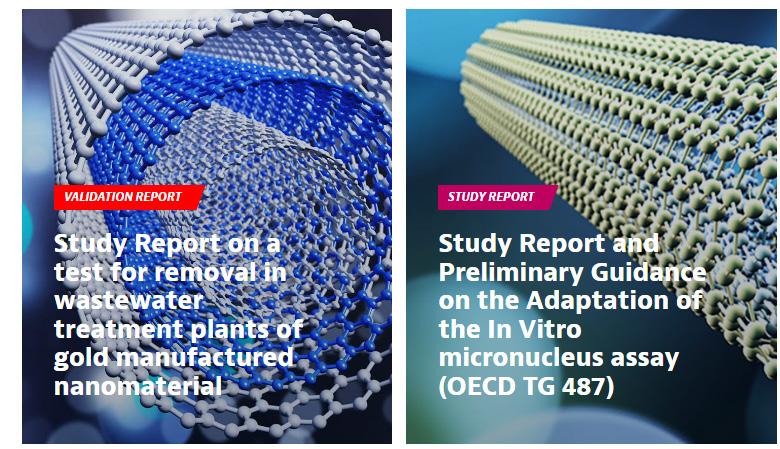

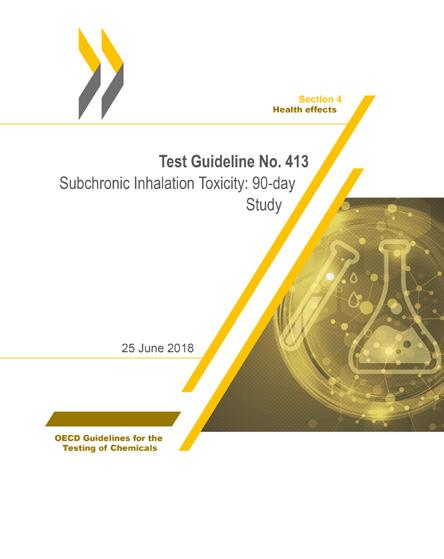
OECD, (2018), Test No. 412: Subacute Inhalation Toxicity: 28-Day Study

https://doi.org/10.1787/9789264070783-en
OECD, (2018), Test No. 413: Subchronic Inhalation Toxicity: 90day Study
https://doi.org/10.1787/9789264070806-en
OECD, (2017), Test No. 318: Dispersion Stability of Nanomaterials in Simulated Environmental Media
https://doi.org/10.1787/9789264284142-en
OECD, (2018)
Guidance Document on Inhalation Studies
https://one.oecd.org/document/env/jm/ mono(2009)28/rev1/en/pdf
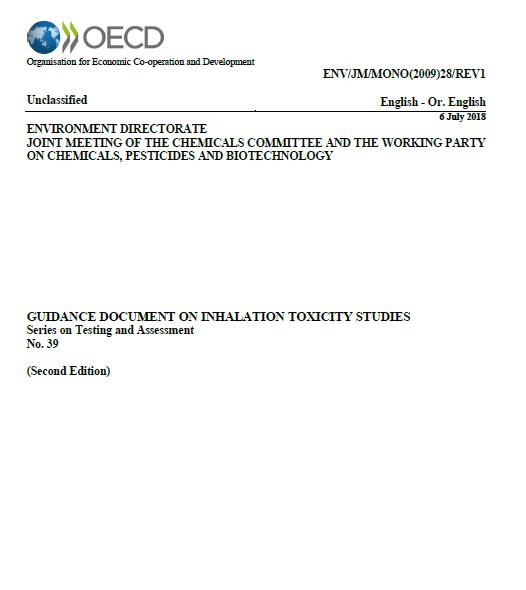
.
TAILORED SAFETY TESTING METHODS FOR NANOMATERIALS


20 September 2023 | Webinar on the Determination of the Hydrophobicity Index of Nanomaterials Through an Affinity Measurement
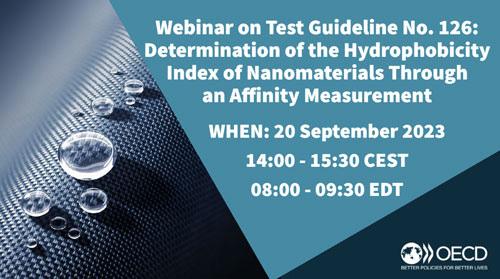
This webinar presented the method to determine the hydrophobicity index (Hy) of nanomaterials (NMs), through an affinity measurement, described in the OECD Test Guideline No. 126.. The method applies to NMs dispersed in an aqueous solution or to NM powders after their dispersions in aqueous solutions, with or without a surfactant, using a recommended protocol. Through this webinar, participants learned the use and limitations of this Test Guideline, as well as on the validation exercise that was done to support its development.
https://www.youtube.com/channel/UChQzB9A31idDdjDJ4mNAwKg/
7 February 2023 | Webinar on Particle Size and Size Distribution of Nanomaterials
This webinar presented the methods described in Test Guideline No. 125 to determine the size and size distributions of nanomaterial particles and fibres spanning from 1 nm to 1000 nm. During this webinar, you will be able to learn the use and limitation of this Test Guideline, as well as on the validation exercise that was done to support its development. The OECD organised this webinar to increase awareness of this newly adopted Test Guideline.
English: https://youtu.be/bHWRMbbNOcE?si=2Q6X9VzteRaFpSk4
Spanish: https://youtu.be/TPCPdBQuvIo?si=c6UCMn0joc6DW-n_
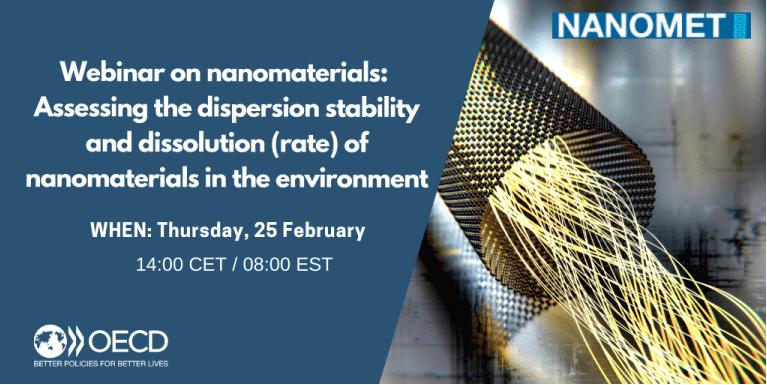
The increased production and wide usage of manufactured nanomaterials suggest a higher probability of finding them in the environment. Therefore, testing the dissolution rate and dispersion stability for toxicity assessment are of paramount importance for adequate hazard assessment. The webinar discussed the scope, content, and use of the Test Guideline No. 318: Dispersion Stability of Nanomaterials in Simulated Environmental Media and its accompanying Guidance Document. Further discussions focused on the scope of the upcoming Test Guideline.
English: https://youtu.be/ODEQGkFonAo?si=m4sjeJ2yMNkb2PE-
Spanish: https://youtu.be/vNLnyG0r_h4?si=C6GP-CxQl6tOIZJg

This webinar presented the scope and use of the Guidance Document No. 317. The guidance addresses practical aspects of carrying out valid tests on nanomaterials, and modifications or additions to OECD Test Guidelines procedures intended to improve the accuracy of test results.
English: https://youtu.be/MKhSzqQIHZc?si=s51dr10176-u2w8T
Spanish: https://youtu.be/hQob7ODH1M0?si=P_ROsvSqJIcCHEMq
Did
Our NANOMET webinars are available in replay in both English and Spanish languages. Watch the videos on our YouTube channel: http://bit.ly/youtube-chemical-safety

This conference explored international approaches to address future challenges in the risk governance of advanced (nano)materials. This includes safe- and sustainable by design (SSbD), harmonisation and standardisation. It also discussed practical application of key results and recommendations in the following thematic areas: harmonisation and standardisation, data management (and FAIR data), accessibility of tools, instruments and guidance via an online portal and effective organisation of risk governance.
During the 2 half-day workshop, participants had the opportunity to hear updates from some of the OECD Test Guidelines being developed within NanoHarmony and related projects. Two roundtables were also held to examine the development of Test Guidelines within OECD and transferring the lessons learned from nanomaterials to the next generation of advanced materials.The workshop was an opportunity for participants to share their experiences and expertise on developing OECD Test Guidelines with NanoHarmony and NANOMET to help develop best practice for the future.
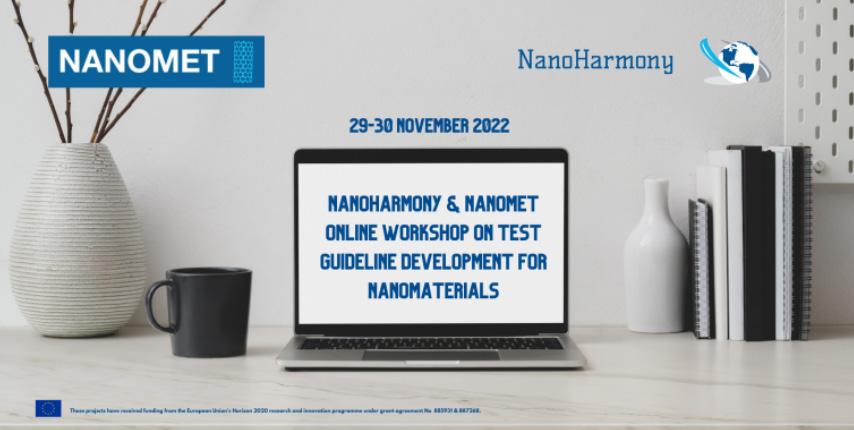
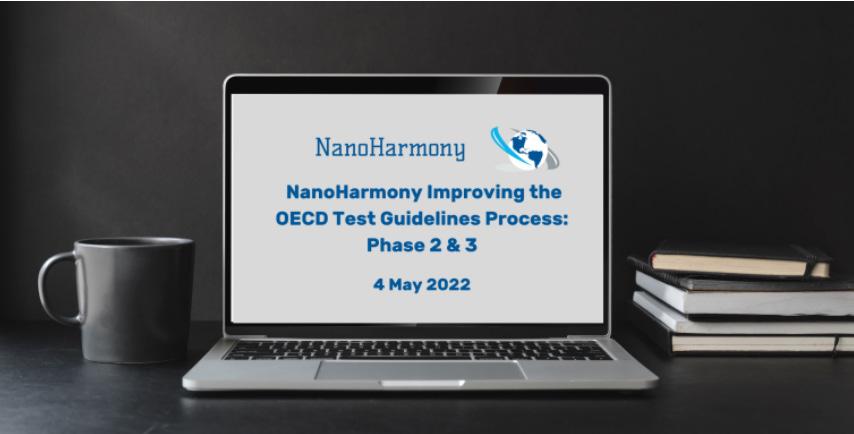
The first webinar in this series focussed on the use of test guidelines in industry and gathered feedback in from stakeholders on their experiences of using test guidelines to help identify best practice for future use.
The 3 day event delivered 14 expert sessions on 11 topics and included almost 200 experts from 25 countries across 4 continents. The closing plenary brought together a further 150 delegates to hear initial outcomes and share discussion, ready for the next stage of development through the project.
16 September 2020 | Webinar on the pathway to Test Guidelines: from science to standards for nanomaterials

The webinar explained how OECD develops Test Guidelines, using case studies from the Test Guidelines that are supported through the projects for expansion into nanomaterials. In addition, the webinar presented how novel methodologies are developed and approved through expert committees, eventually becoming internationally accepted standard methods used by governments, industry and independent laboratories to assess the safety of chemicals.
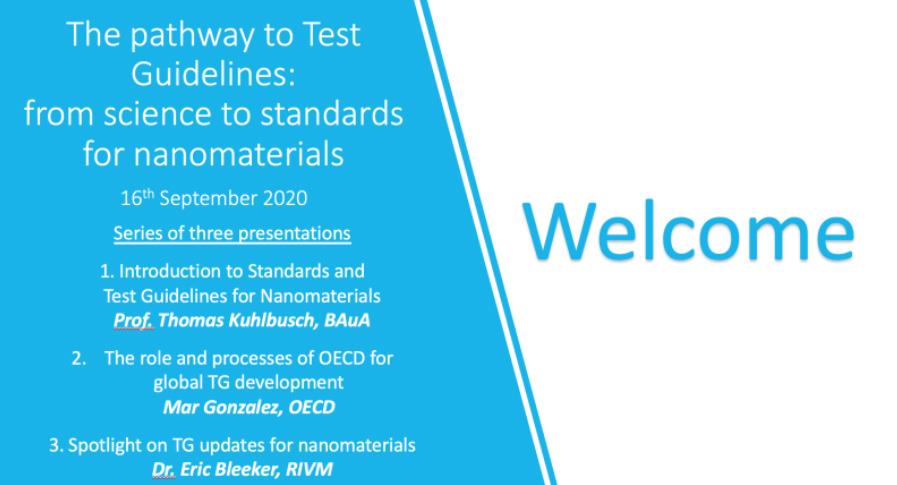
Nanomaterials are tiny particles, invisible to the human eye. Because their properties differ from their bulk form, their safety need to be properly assessed. For that reason, the OECD is working towards standardised methods that can be used to generate relevant and reliable data.

Access the website: https://oe.cd/nanomet
The OECD Guidelines for the testing of chemicals are a collection of the most relevant internationally agreed testing methods used by governments, industry and independent laboratories to assess the safety of chemicals. They are primarily used in regulatory safety testing and subsequent chemical notification and registration. The set of Test Guidelines is updated on a regular basis to keep pace with progress in science and countries’ regulatory needs. OECD-wide networks of national coordinators and national experts provide input from scientists in government, academia, and industry.
Access the website: https://oe.cd/test-guidelines

It aims to support innovation and to ensure that nanomaterials and advanced materials are developed in a safe and sustainable way supported by a circular economy. SSIA combines the Safe-and-Sustainableby-Design and Regulatory Preparedness concepts in order to identify and minimise the possible health and environmental risks, and sustainability impacts of innovative materials, products, applications, and processes in a timely manner during the innovation process.
Access the website: https://oe.cd/ssia
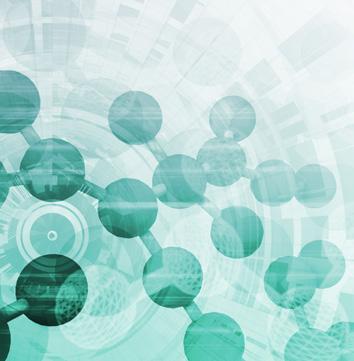

As nanomaterials started to be used in commercial applications, OECD identified the need to analyse the potential safety concerns caused by manufactured nanomaterials. OECD launched a programme of work in 2006 to ensure that the approaches for hazard, exposure and risk assessment for manufactured nanomaterials, and other emerging materials, are of high quality, science-based and internationally harmonised.
Access the website: https://oe.cd/nanosafety
Be the first to know about the latest OECD publications on Chemical Safety and Biosafety by subscribing to our newsletters: l Chemical Safety: https://account.oecd.org/subscribeEmail.
aspx?categoryKeys=10459
l Biotechnology update: https://account.oecd.org/subscribeEmail.
aspx?categoryKeys=610
Write to us:
OECD Environment, Health and Safety Division Environment Directorate
2, rue André Pascal 75775 Paris Cedex 16
FRANCE Email us:
ehs.contact@oecd.org
Find us on: OECD website : www.oecd.org/chemicalsafety
Our account: @OECD_ENV

Subscribe to our OECDiLibrary and statistics services: www.oecd-ilibrary.org
Subscribe to our YouTube channel: http://bit.ly/youtube-oecd-chemical-safety
Funded by the European Union

© OECD Sept 2023
OECD freely authorises the use of this material for non-commercial purposes. All requests for commercial uses of this material or for translation rights should be submitted to rights@oecd.org.
All images are from Shutterstock.com.
http://oe.cd/nanomet